Key takeaways:
- Drone mapping technology enables detailed geographical data collection and creates 3D models, assisting in environmental monitoring.
- Effective stakeholder engagement relies on active listening, empathy, and building long-term relationships to address community concerns.
- Navigating local policies requires patience and flexibility, as well as thorough documentation to foster transparent relationships with regulators.
- Involving diverse stakeholders, including marginalized voices like local fishermen and artisans, is crucial for shaping inclusive environmental policies.

Understanding drone mapping technology
Drone mapping technology has transformed the way we capture and analyze geographical data. I remember the first time I witnessed a drone in action, hovering majestically over a landscape, its camera capturing high-resolution images. It made me realize how accurately these flying machines can gather data, even in hard-to-reach areas.
One fascinating aspect of drone mapping is its ability to create detailed 3D models of landscapes. Think about it: with just a few flights, you’re not only visualizing terrain but also detecting changes over time. I once participated in a project that mapped an area undergoing significant erosion, and seeing the before-and-after models was a striking reminder of nature’s power and vulnerability.
Drones utilize GPS and advanced sensors to collate data points that are then transformed into vibrant maps. This technology is accessible—many hobbyists can now explore drone mapping. Have you ever wondered how your neighborhood looks from above? When I took my first aerial shots, I was captivated by the different perspectives, realizing how many stories the land could tell just from a bird’s-eye view.
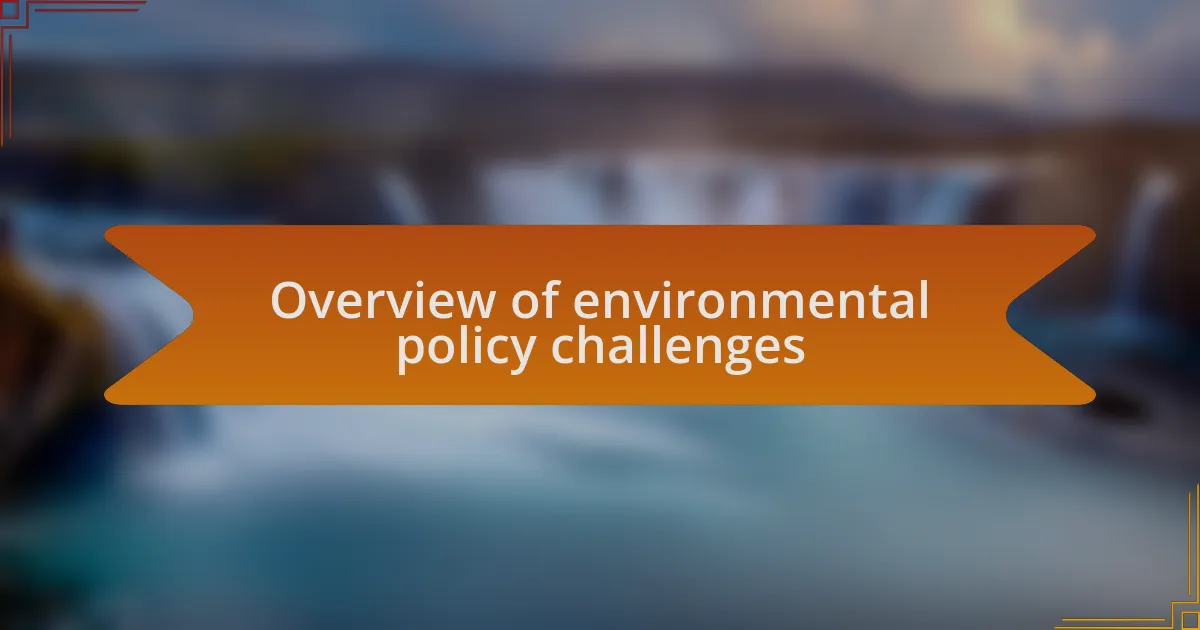
Overview of environmental policy challenges
Navigating environmental policy challenges can often feel like walking a tightrope. From my experience, the primary hurdle is balancing economic development with ecological preservation. I recall a heated discussion during a community meeting about an upcoming construction project. Many locals, including myself, expressed concern about its impact on the nearby coral reefs, which are vital not just for marine life, but also for sustaining tourism in Zanzibar.
Additionally, policies often lack clarity and adaptability. I once encountered a situation where outdated regulations were still being enforced, hindering innovative solutions that drone mapping technology could provide. It made me wonder: how can we forge a path that embraces progress while respecting our environment? This friction between tradition and modernity creates substantial obstacles in addressing pressing ecological issues.
Moreover, stakeholder engagement remains a critical challenge. I vividly remember collaborating with local fishermen who rely on the health of marine ecosystems for their livelihoods. Their voices, often marginalized, revealed invaluable insights into sustainable practices. Engaging with various stakeholders is essential; without their input, we risk overlooking the very solutions that could lead us toward effective and inclusive environmental policies.
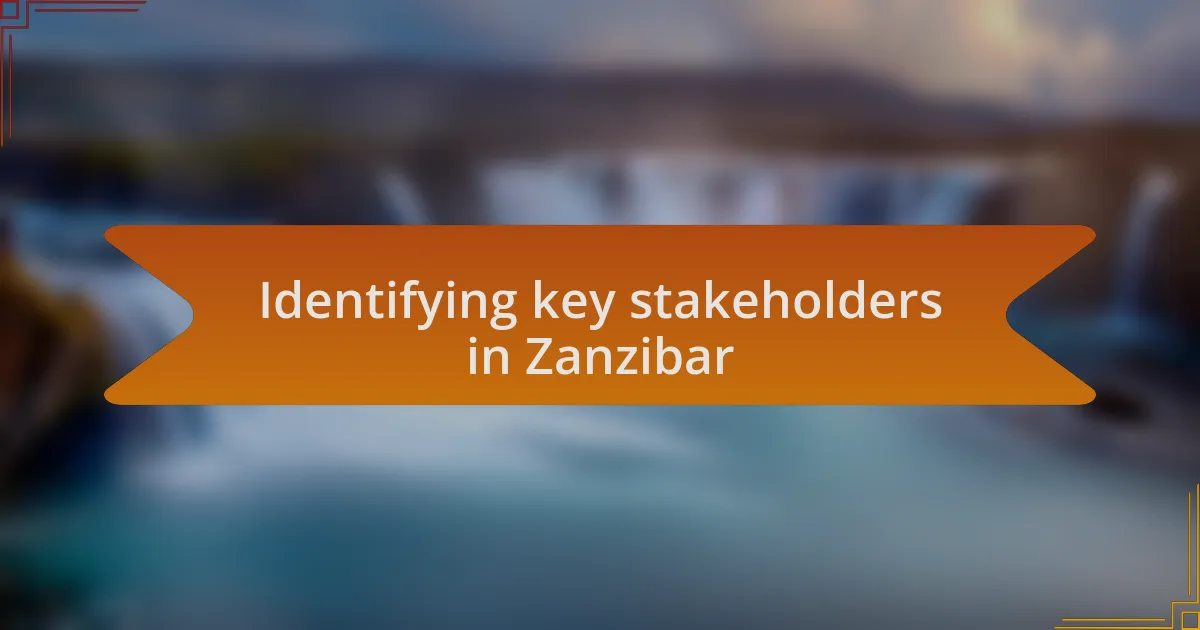
Identifying key stakeholders in Zanzibar
Identifying key stakeholders in Zanzibar requires a thoughtful approach, as the landscape is diverse and intricate. One memorable instance for me was during a community workshop where I interacted with local farmers, conservationists, and tourism operators. Their varying perspectives became evident, highlighting how each group has a distinct stake in environmental policies, from sustainable agriculture to marine conservation.
I often find that the most impactful stakeholders are the ones that aren’t immediately obvious. For example, while researching drone mapping initiatives, I stumbled upon the valuable contributions of local artisans who depend on the natural resources for their crafts. Their involvement in environmental discussions can bridge the gap between tradition and modern policy-making, emphasizing a holistic view. Who would have thought that artistry could play a critical role in environmental conservation?
Building relationships with government officials and NGOs is also vital. During a recent meeting with a local environmental agency, I realized how their policies could support or hinder community efforts. Understanding the motivations of these entities can lead to more productive collaborations. Have you ever considered how the interplay between different stakeholders shapes the environment around us? It’s a crucial dynamic that I believe is necessary to explore for anyone passionate about sustainable development in Zanzibar.
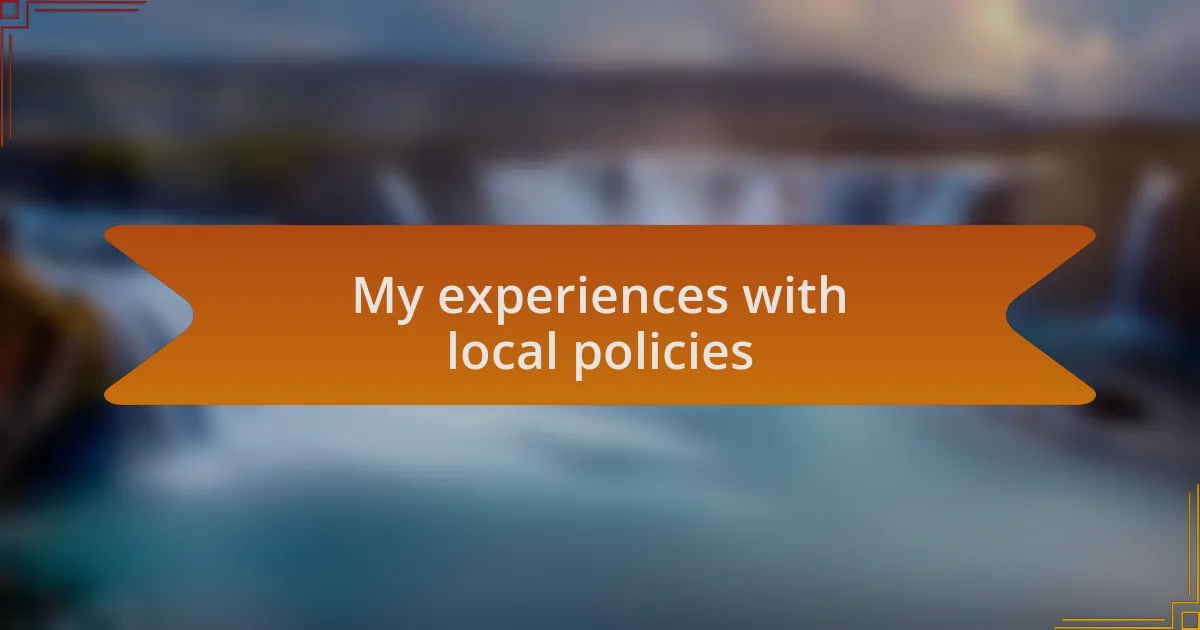
My experiences with local policies
Navigating local policies in Zanzibar has often felt like walking a fine line. I remember a time when I participated in a town hall meeting focused on drone regulations. The atmosphere was charged with passion; local fishermen expressed their fears about potential disruptions to their traditional fishing grounds. It struck me how crucial it is for policymakers to listen and respond to these genuine concerns, as they directly impact livelihoods.
One particularly enlightening experience occurred when I met with a small group of local activists advocating for transparent environmental policies. Their steadfast commitment left a lasting impression on me. I realized that while I brought my expertise in drone mapping, their grassroots perspective was equally essential in shaping policies that truly serve the community. How often do we, as practitioners, overlook the voices that are closest to the ground?
I’ve also learned that change isn’t always linear. During discussions about integrating drone mapping into local conservation efforts, I faced resistance from some policymakers. They were understandably cautious about the new technology’s implications. However, with patience and persistent dialogue, I saw a gradual shift toward openness. This experience reinforced my belief that building trust and understanding local fears can lead to breakthrough moments in policy development. Have you ever faced a similar challenge where patience paid off?
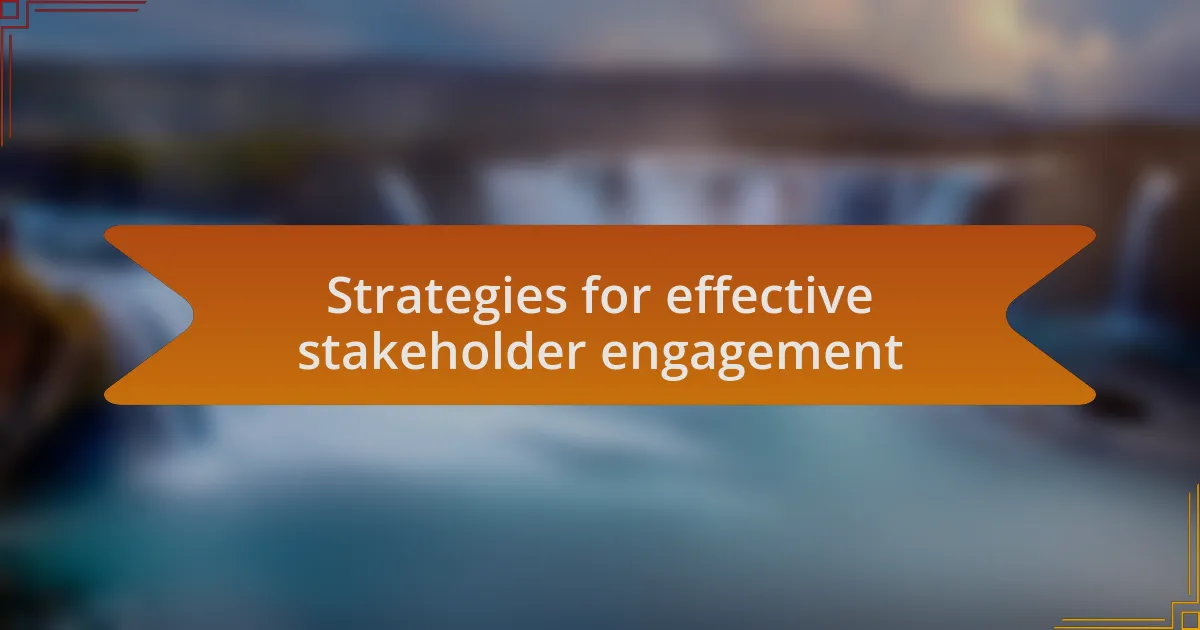
Strategies for effective stakeholder engagement
Engaging stakeholders effectively requires a blend of active listening and genuine empathy. I recall a workshop where I facilitated discussions between drone operators and local farmers. The farmers were particularly concerned about crop damage from aerial surveys, and by giving them a platform to voice their fears, we fostered a collaborative environment. It reminded me that sometimes, just giving people a chance to speak can pave the way for unexpected solutions. Have you had moments where simply listening changed the course of a conversation?
Building relationships over time is another key strategy. In one instance, I worked closely with a community leader who initially viewed drone mapping with suspicion. Through regular check-ins and sharing insights, we gradually built rapport. By the end of our project, he not only supported our efforts but also championed the technology in his community. I often wonder, how many opportunities could emerge if we invested time in nurturing these connections?
Lastly, creating educational opportunities can significantly enhance stakeholder engagement. I organized a series of information sessions showcasing the benefits of drone mapping for environmental monitoring. Many participants, previously skeptical, left with a newfound appreciation for the technology. Seeing their faces light up during interactive demonstrations reminded me of the power of knowledge in shifting perceptions. How have you approached educating stakeholders in your projects?
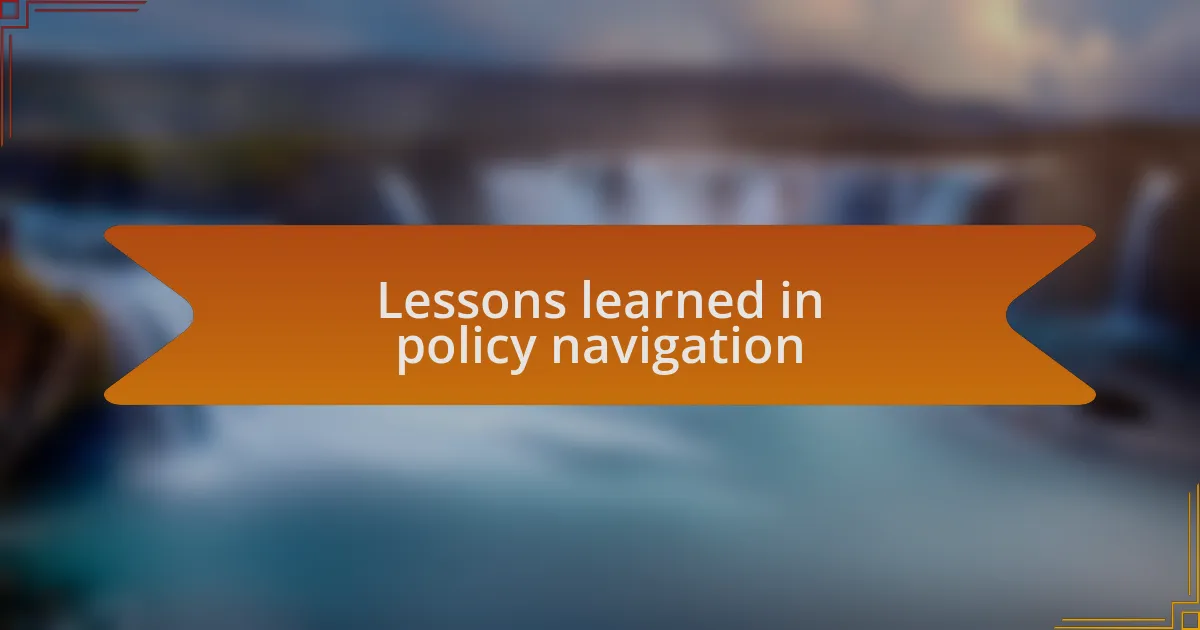
Lessons learned in policy navigation
Navigating policy issues can sometimes feel like walking a tightrope. I learned early on that patience is crucial. During one pivotal negotiation with local regulators, I experienced moments of frustration when decisions were delayed. Yet, I discovered that taking the time to understand their concerns allowed me to address underlying fears, transforming tensions into collaboration. Have you ever realized that a little patience can turn a challenge into a partnership?
I also found that flexibility in approach is key. When a proposed policy shift threatened to impede our project, I decided to pivot my strategy. Instead of pushing back, I proposed a compromise. This not only opened the door for a fruitful discussion but also illustrated the importance of adaptability in policy navigation. How many times have you had to rethink your plans to achieve a better result?
Lastly, it’s essential to document every interaction with policymakers. I made it a habit to keep detailed notes during all meetings, which proved invaluable. On one occasion, those notes helped clarify a miscommunication, ultimately allowing us to align our objectives with regulatory requirements. Reflecting on this, how often do you think about the power of documentation in fostering transparent relationships?